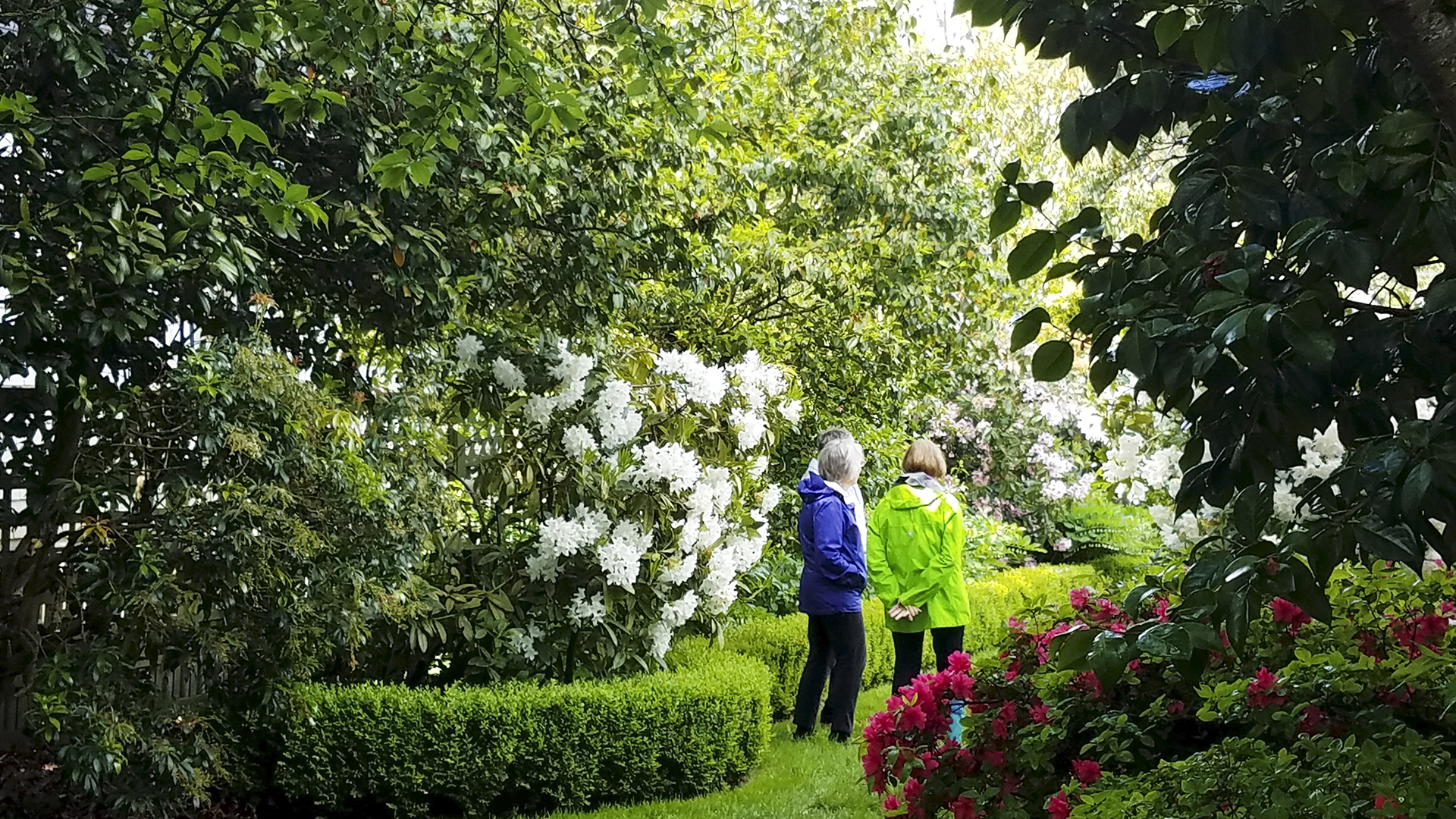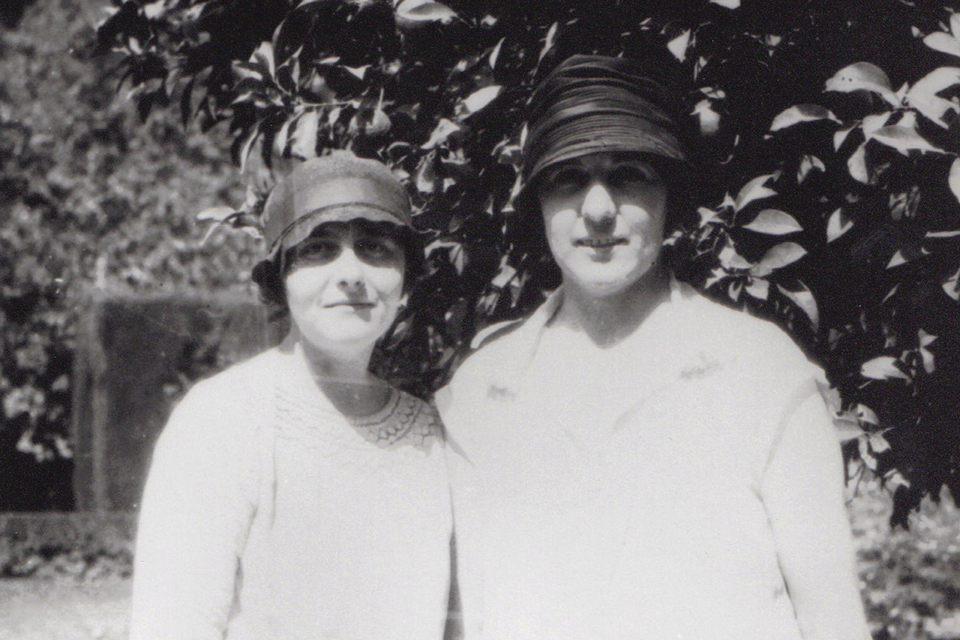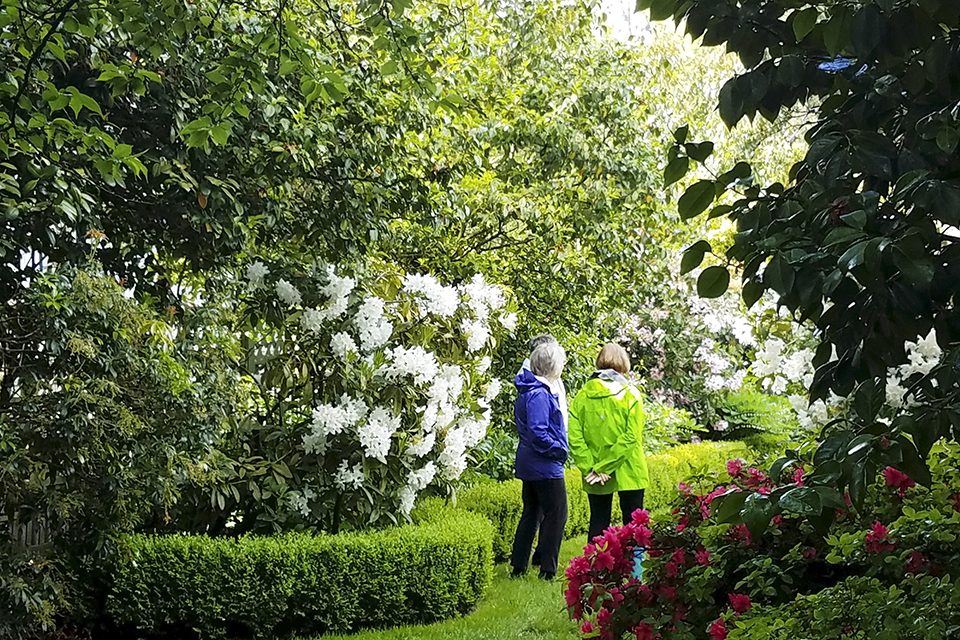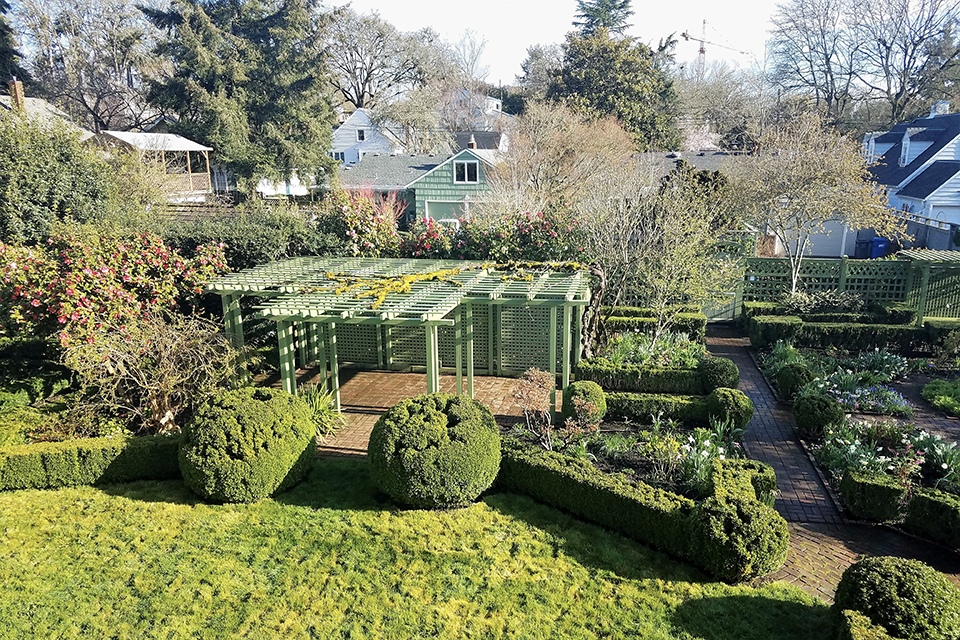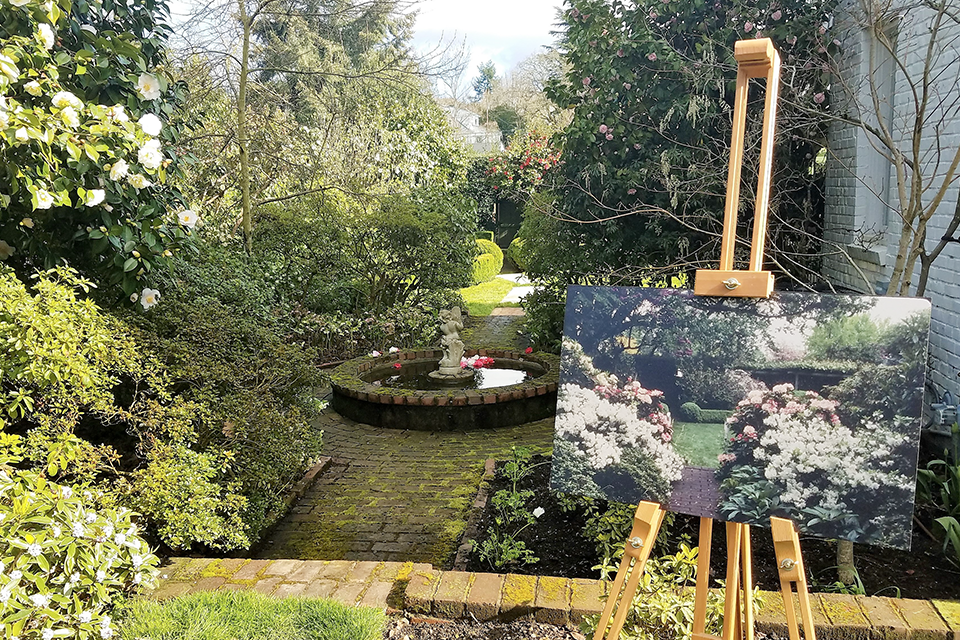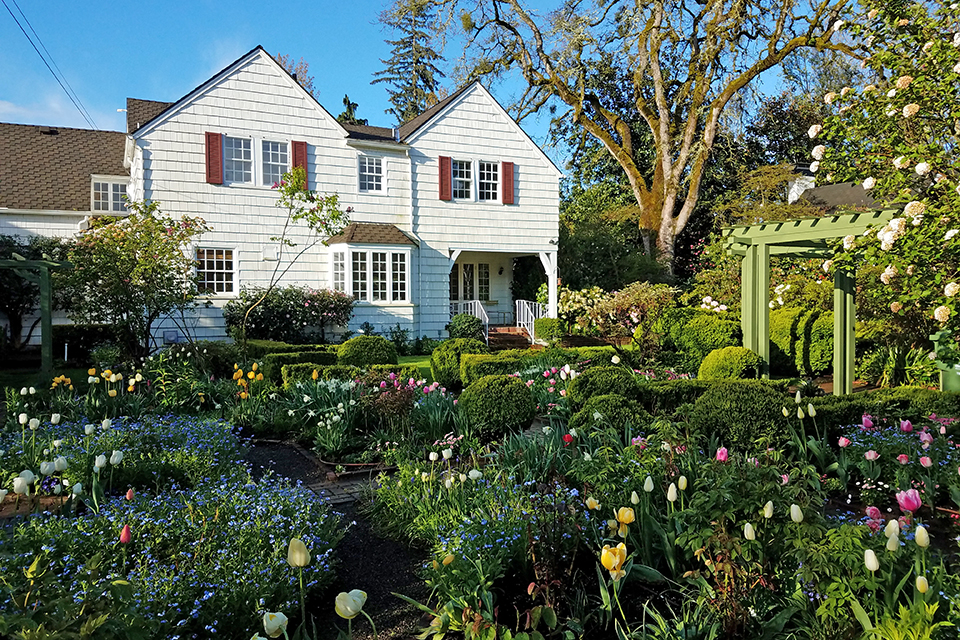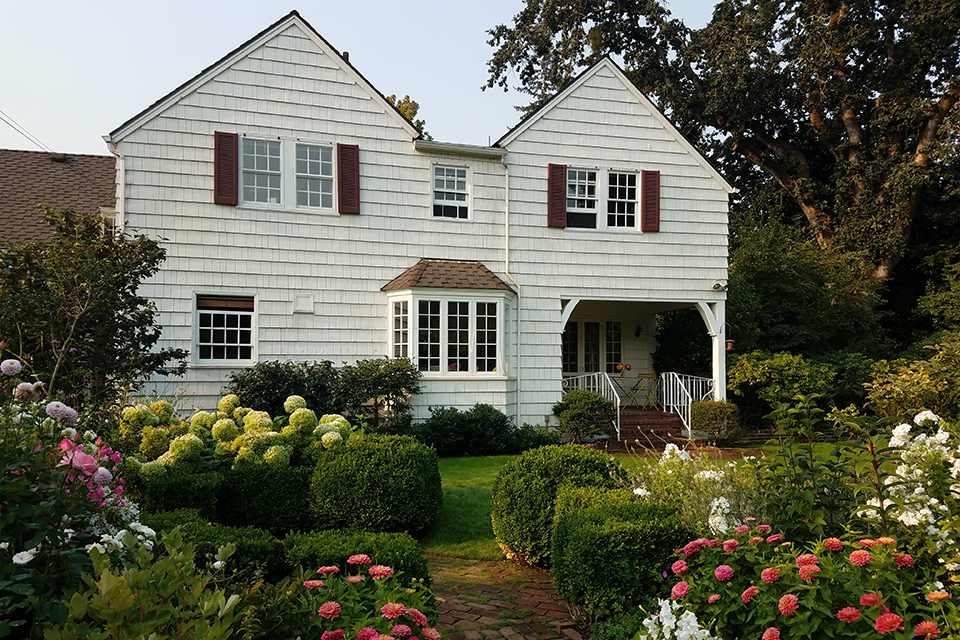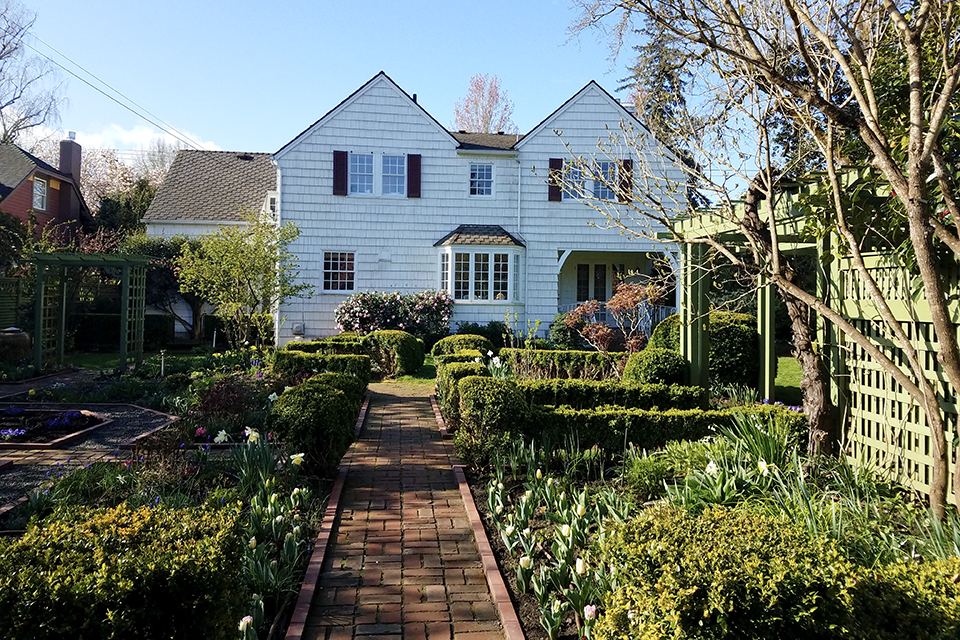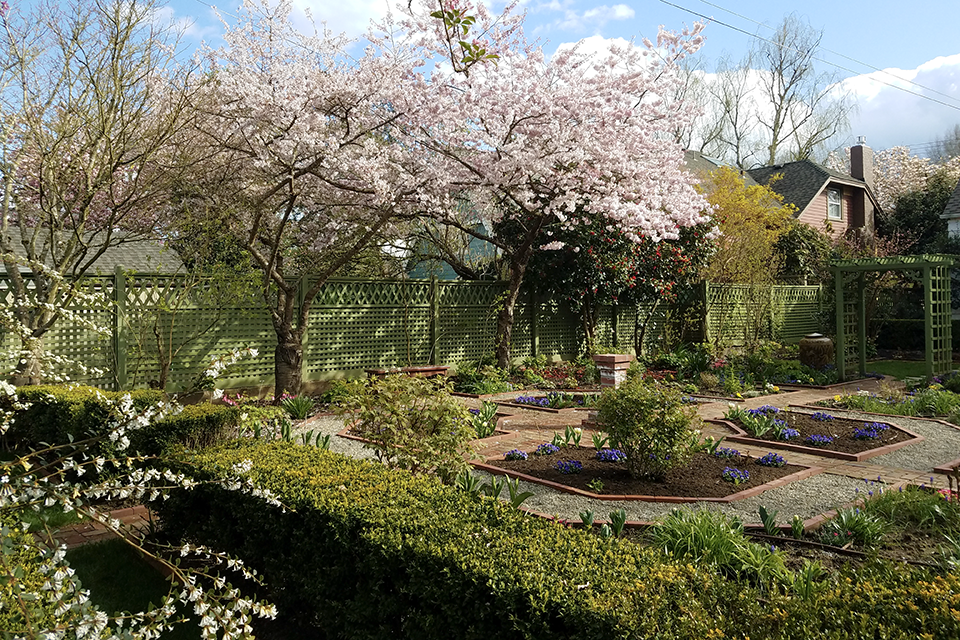Elizabeth Lord and Edith Schryver practiced landscape architecture together in Salem, Oregon, from 1929 to the 1969. Their firm was the first office of professional women landscape architects on the West Coast.
Background
Elizabeth Lord was born in Salem, Oregon in 1887, and Edith Schryver in Kingston, New York, in 1901. They met as students in 1927 on a Lowthorpe School of Landscape Architecture trip to Europe to study gardens. Their residential work was influenced by the work of other women designers, particularly Gertrude Jekyll, Ellen Shipman, and Louise Beebe Wilder.
Gaiety Hollow, their personal home and studio, was completed in 1932 and occupies a nearly square, one-third-acre lot approximately one mile southwest of the Oregon State Capitol building and across the street from Bush’s Pasture Park. Designed in collaboration with architect Clarence Smith, the L-shaped brick-and-wood Colonial Revival home and formal garden are integrated through a series of axes and planned vistas, a hallmark of Lord & Schryver’s designs.
In addition to their residential work, the two consulted for Salem's Park Commission, Tree Commission, Art Association, and the Oregon Roadside Council and Capitol Commission. Each also wrote for the Oregonian and actively promoted their firm on the radio and by traveling on the lecture circuit.
Lord & Schryver designed more than 200 gardens in the Pacific Northwest over a span of more than 40 years – mostly residential, but also including several civic and institutional settings. Commissions came from recommendations passed along among a network of friends and through the Portland Garden Club. The firm’s designs often featured formal axes with a variety of focal points punctuated by sculptures delineated by boxwood, soft arches formed by flowering trees, or even an ethereal bank of heather. They were known for creating elegant garden rooms that could be used for entertaining or for more private, quiet use.
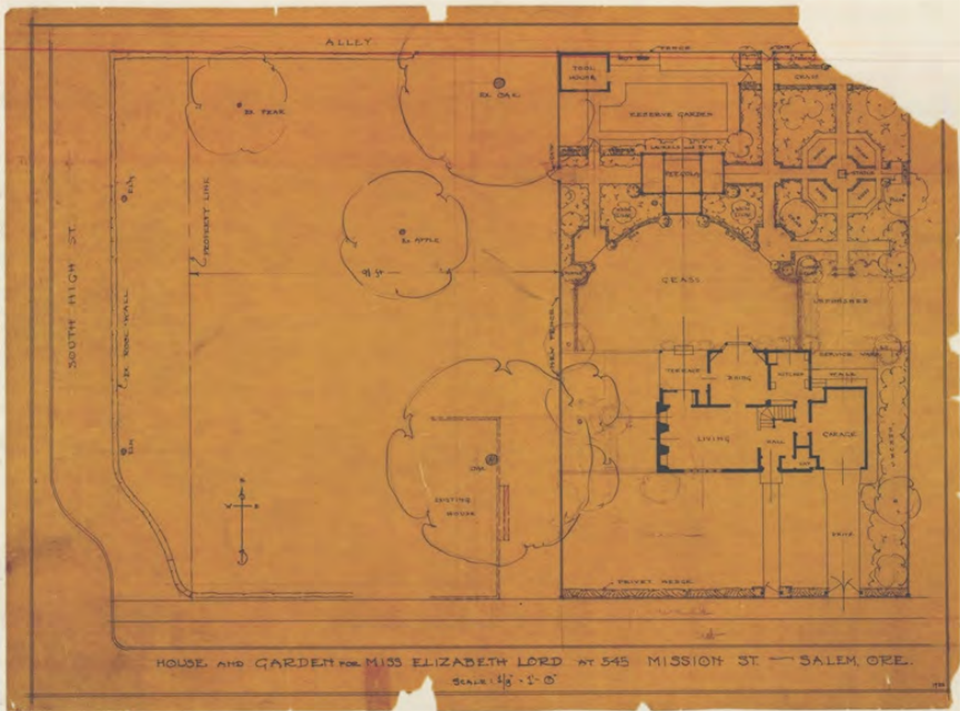 Gaiety Hollow Garden Plan, Salem, OR, 1932. Image courtesy NPS.
Gaiety Hollow Garden Plan, Salem, OR, 1932. Image courtesy NPS.
The Gaiety Hollow garden, located on the north and west sides of the property, comprises six distinct garden rooms (Entry Garden, Evergreen Garden, North Lawn, Drying Garden, Parterre Garden, and West Allée) delineated by boxwood hedges, allées, and other plantings, and connected by brick pathways. Plant varieties are clustered to achieve a range of sizes, textures, and colors throughout the year. A large wooden pergola planted with a combination of grape vines, roses, and clematis serves as the focal point at the end of an axis that extends from the back porch across the North Lawn. A circular concrete fountain with a cherub statue stands at the center of the Evergreen Garden and serves as another focal point between the Entry Garden, North Lawn, and pergola, and can be viewed through the living room window.
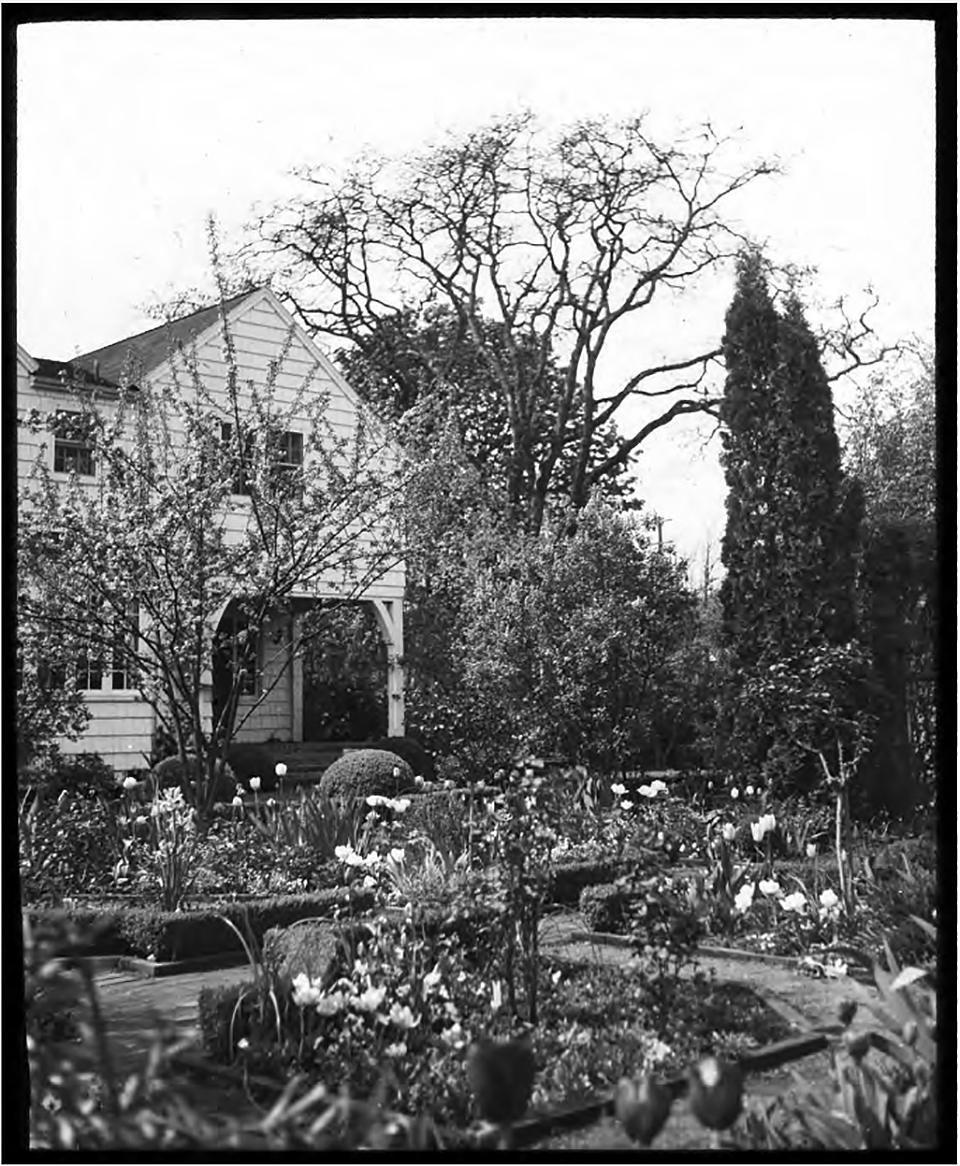 Gaiety Hollow Parterre Garden, Salem, OR, 1930s. Image courtesy NPS.
Gaiety Hollow Parterre Garden, Salem, OR, 1930s. Image courtesy NPS.
After Shryver died in 1984, the property passed to a second owner; the Lord and Shryver Conservancy had a lease option, and following a two-year capital campaign became its third owners, restoring and rehabilitating the garden and opening it to the public. Gaiety Hollow was listed in the National Register of Historic Places in 2014 because of its garden and is located within the Gaiety Hill/Bush’s Pasture Park Historic District, listed in 1986.

The work of Lord & Schryver was featured in Landlide 2020: Women Take the Lead. Image Courtesy The Cultural Landscape Foundation.
Advocacy and Engagement
TCLF’s report and exhibition Landslide 2009: Shaping the American Landscape included Lord & Schryver’s legacy and noted that all the gardens they designed, “with one exception, are in private ownership. With time, most of them have degraded for various reasons including lack of knowledge and/or interest as ownership changes, the labor-intensive maintenance requirement, and the increased growth of tree canopy altering the growing conditions.” The most significant threat to their legacy was that a “lack of access to their work hinders raising public awareness about their design practice.”
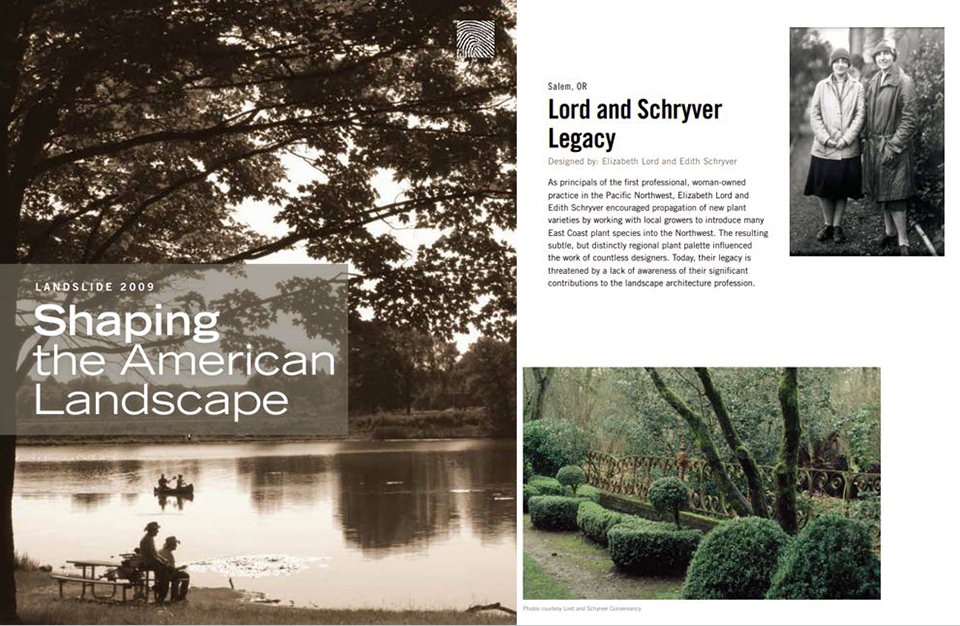 Shaping the American Landscape Booklet, featuring Gaiety Hollow, 2009.
Shaping the American Landscape Booklet, featuring Gaiety Hollow, 2009.
As part of its annual challenge, the National Park Service’s Historic American Landscapes Survey (HALS), in 2013, received thirty entries that documented cultural landscapes associated with women. The first-place prize went to Gaiety Hollow. The documentation was based on a Cultural Landscape Report produced by Laurie Matthews, Director of Preservation and Planning + Design at MIG. A significant portion of the prize money was donated to the Lord & Schryver Conservancy, which had been established in 2005.
In 2017 the conservancy hired its first Executive Director. They also hired a full-time garden manager and curator who was charged with maintaining the historic integrity of the property and managing the garden. In addition to these critical hires, other important work took place: a comprehensive restoration of the landscape neared completion; historical elements of the driveway were restored, including concrete pavers and grass strips; a replica of the original entrance gate was installed; and a new gate across the driveway following a design by Shryver was under construction. In addition, brick pathways in the parterre garden were restored, the pergola replaced, and a new drainage system was installed along the West Allée. An inventory and labelling of plant materials was also completed, and, along with a refurbishment of the lawn, historic herbaceous plants were reintroduced. Finally, the development of a rich and ambitious programming agenda – including a docent program, garden workshops, tours, and lectures – progressed. Looking ahead, the conservancy recently announced their intent to hire a development director.
Providing a greater historical context for Gaiety Hollow, and the firm’s pioneering body of work, The Northwest Gardens of Lord & Schryver, by landscape historian Valencia Libby, was published in 2021 (Oregon State University Press in cooperation with the Lord & Schryver Conservancy). The richly illustrated book traces the firm’s career from its beginnings at the Lowthorpe School of Landscape Architecture through their success consulting for public and private clients throughout the Pacific Northwest. Perhaps most significantly, the book fosters the work of the conservancy in stewarding the Lord & Schryer legacy, including their home and garden at Gaiety Hollow.
TCLF’s most recent advocacy for Lord & Schryver’s legacy included the Beebe Garden in Lake Oswego, OR, which was featured in Landslide 2020: Women Take the Lead, a report and digital exhibition about threatened nationally significant cultural landscapes that were designed by or are associated with women.
Selected Resources
“Both Inspiration and Beauty” - A New Book on Lord & Schryver
“Conservancy Embarks on Campaign to Purchase Gaiety Hollow,” March 4, 2014
“Significant Advances for the Legacy of Elizabeth Lord and Edith Schryver,” July 2, 2015
“Lord & Schryver Conservancy Reaches New Milestones,” May 3, 2018
“Lord & Schryver Conservancy Names First Executive Director,” August 21, 2018
Selected Media Coverage
“The Center for Cultural Landscapes Announces 2022 Landscape Studies Initiative Book Awards,” April 6, 2022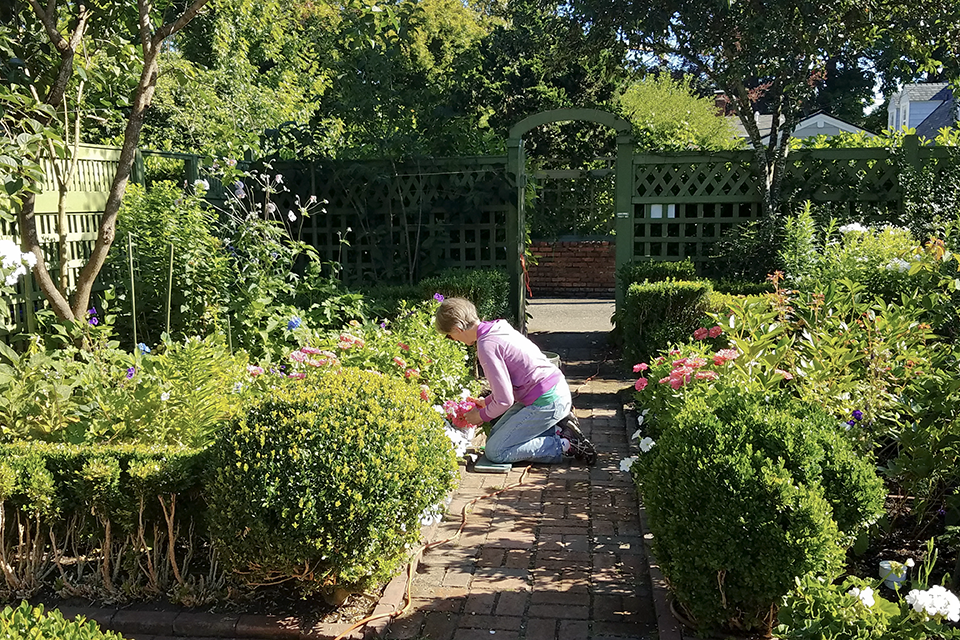
-
Gaiety Hollow, Salem, OR, 2017. Photo by courtesy Lord and Schryver Conservancy.
